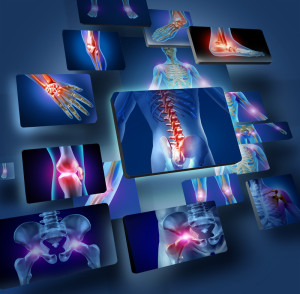Have you ever experienced chronic pain? Did you try to ignore it and push through it? Or did you see your doctor and hope for a resolution?
We expect quick fixes when something goes wrong. Yet chronic pain may mean physical therapy and daily exercises to strengthen certain muscles and address the cause of the pain. Far from a quick fix!
That’s what I’m going through now and at times my patience and discipline are low. I’m supposed to do a series of focused exercises twice a day. I am trying to take the long view. Just like my shoulder surgery for a torn rotator when I had to do physical therapy for 6 months.
If I think I don’t have time for the exercises or I just don’t want to do them, I tell myself this is what it will take to relieve the back and hip pain I have been living with. No one is just going to fix it for me. Yes, my physical therapist will assess my pain level each visit, ask me how the newest exercises are working out, and determine what to add to my routine. But it’s on me between visits.
I’ve had four visits and try to schedule one once or twice a week. I know the time will come when the time between visits gets longer. And then she will tell me I’m on my own. It will be the true test of whether I own this or not. Will I make the time to do the exercises twice a day? Will I feel my slow progress and realize it’s working?
It’s like flossing your teeth, you need to own it. You can’t just do it for a few days before your teeth cleaning appointment – you have to make it a daily discipline.
I asked my physical therapist about studies on patients not doing their exercises at home. I told her about my experience of owning it after shoulder surgery. She asked me if I was owning this. I said I was getting there – trying to have the long view because I don’t want to live with pain. We need to own our own health. I can’t complain about the pain if I’m not willing to do my part.
We had a good chat. She described how her role is to help patients be successful. She has learned to not give too many exercises, or the patient won’t do them. If the patient hates the exercise, she knows they won’t do it. She has to find an acceptable alternative. And she emphasizes patient education.
My shoulder pain reached a point I had to address in 2007. Now I am dealing with back and hip pain. With my shoulder, my doctor first started me on a course of physical therapy but then concluded it wasn’t going to resolve it. I required surgery.
The post-surgery physical therapy was excruciatingly painful in the early weeks – painful to the point of tears. But I maintained the long view – 6 months of daily exercises and my shoulder would be good again. And it was. Now, the only time I think about it is when I’m at the gym doing weights and that shoulder hurts in a way the other one doesn’t. That’s how I know I need to stop or adjust what I’m doing.
Judy Murphy, Chief Nursing Officer at IBM Global Healthcare, gave an excellent keynote titled “Beyond the EHR: From Transformation to Reinvention” at the recent NEHIMSS Chapter Annual Spring Conference. In her talk she noted that health, wellness and prevention are critical goals of population health management. Patient engagement and personalization from a patient perspective means to “know me, engage me, and empower me”.
Healthcare organizations talk a lot about patient engagement and digital health. Many are investing significant dollars. These are important initiatives as healthcare continues to evolve and becomes more patient focused. Owning our own health and partnering with our clinicians is at the core of patient engagement.
Fortunately, I have had minimal health issues. I had my cancer scare with melanoma in my late 30’s but we caught it before it had a chance to spread. My biggest takeaway from that was to not ignore signs. I had a large odd shaped mole on my hand. I didn’t know what it might be. One day, our pathology chair was sitting next to me in a meeting. He noticed it and whispered, “How long have you had that? You need to get it looked at.” I made an appointment with a dermatologist the next day. To this day I am truly grateful to that pathologist.
I eat a reasonably healthy diet, go to the gym 4 times a week, and average 8,000 steps a day. I guess I’m considered “healthy well”. It’s people like me who have minimal medical needs and want all the conveniences of digital health.
Now if only an app could do my exercises for me!
Related Posts:
